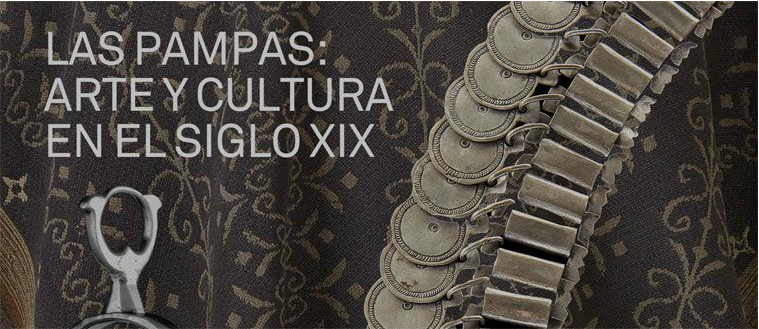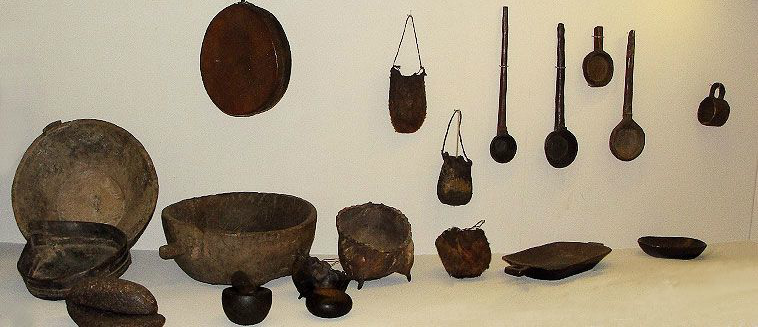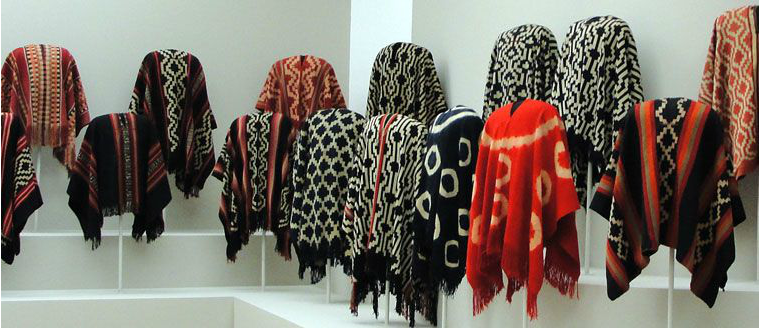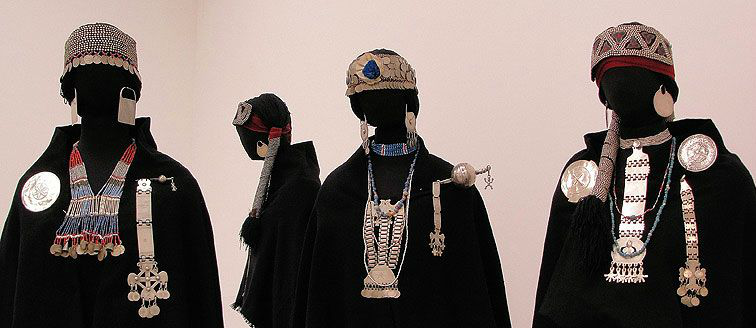Presentation
Las Pampas: Art and Culture in the 19th Century brings together a unique group of pieces of the diverse cultures that offer the possibility to observe the customs fostered in the Pampas territory during an unsettling period of political and social organization. The exhibition brings over 500 pieces of silverwork, ponchos and daily objects that can be appreciated, not only for their esthetic value, but also for its craftsmanship and textile design. Under the general direction of Claudia Caraballo de Quentin and with the exhibition design by Luis Fernando Benedit, Las Pampas… allows us to understand the richness and diversity of a historical period through the contemplation of pieces, which transformed the iconography of the Pampas.
Public museums and private collections shape a patrimony, that allows the reconstruction of uses and customs of the period. History, visited from a contemporary esthetic point of view, form the cultural hierarchy and values of artistic and everyday life objects. Through the stories told by travelers and local intellectuals- such as Lucio V. Mansilla– literature enables a comprehension of the times. Las Pampas… builds a tale: through the contemplation of the objects and their esthetic value, we dare imagine a landscape populated by caciques (chiefs) on horses and their women covered in ornamentation, dominating the immensity of the plain.
Las Pampas… is organized in four galleries that represent the principal themes of our culture: women, the horse, social and political organization, cacicatos (lands owned by the caciques), goldsmithing, and ornamentation as a sign of power, together with ponchos with their design value and allusion to hierarchy. San Martín, Mansilla and cacique Calfucurá are present with their garments. San Martín’ s poncho –courtesy of the Museo Histórico Nacional- allows us to imagine the crossing of the Andes and the accomplished dreams of a national hero, as well as help us relive the moment when Lucia V. Mansilla was able to save his life thanks to a Poncho given to him by a prominent cacique.
From the art scene, Fundación Proa intends to revisit our history and value the wealth and creativity of that these past cultures produced. The exhibited pieces are permanent images of our cultural tradition displayed to be treasured.
Dirección general
Claudia Caraballo de Quentin
Diseño expositivo
Luis Fernando Benedit
Producción
Graciela Esnal
Camila Jurado
Montaje
Grupo Signo:
Esteban Campili
Matías Dinenzon
Federico Ezequiel Fischbarg
Eduardo Gismondi
Sergio Lamanna / Patricia Cecilia Lissa Eduardo Patricio López Méndez
Hernán Soriano
Eugenio Ángel Tornadú
María Pía Villalonga
Fundación Proa
Juan Pablo García
Diego Mur
Educación
Paulina Guarnieri
Carolina Rodríguez Pino
Educadores
Rosario García Martínez
Lucía Marocchi / Bárbara Paulin
Juanita Sánchez
Camilla Villarruel
Prestadores
Museo Etnográfico “Juan B. Ambrosetti”, bBuenos Aires.
Fundación García Uriburu, Buenos Aires
Museo Gauchesco y Parque Criollo Ricardo Güiraldes, Provincia de Buenos Aires
Museo Histórico Nacional, Buenos Aires
Museo Pampeano de Chascomús, Provincia de Buenos Aires
Colecciones Privadas, Argentina
Agradecimientos
Raúl Amadori
lfredo Anchorena
Eduardo Anchorena
Carlos Belgrano
Beltrán Juan Benedit
Oscar Berazaluce
Marcos Bledel
Mercedes Bullrich
Juan y Adela Casal
Octavio Caraballo
Guillermo Cóncaro
Ruth Corcuera
Pampa Cura
Armando de Ferrari
Santiago Di Tella
Nelly Ruvira
Javier Eguiguren
José y Susy Eguiguren
Nicolás García Uriburu
Matteo Goretti
Elena Olazabal de Hirsch
Gustavo Kagel
Ivo Kagel
Ignacio y Claire Lartirigoyen
Pablo Lozano
Fernando Mignaquy
Ricardo y Belén Paz
José Antonio Pérez Gollán
José Luis Rodríguez
Marta Grande de Sánchez
Valerio Zubiaurre
Con el apoyo de





